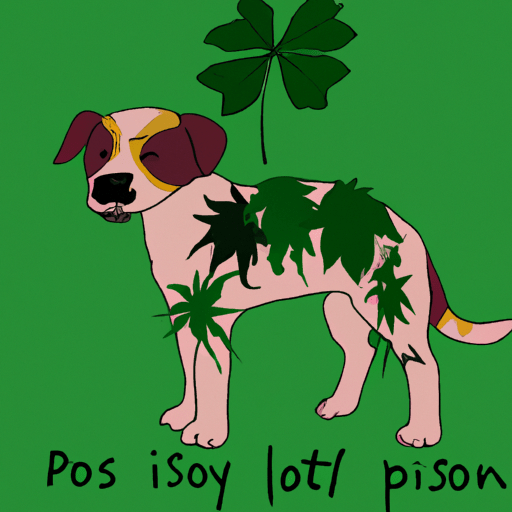“`markdown
What Does Poison Ivy Look Like on Dogs?
As a caregiver, you’re always on the lookout for your dog’s health and safety. One thing that might not always be on your radar is the threat of poison ivy. Yes, unfortunately, dogs can also be affected by this pesky plant. In this guide, we’ll walk you through how to identify poison ivy on dogs, what to do when your furry friend has an encounter, and how to prevent future incidents.
Recognizing Poison Ivy on Dogs
Just like in humans, poison ivy on dogs can manifest as a rash. However, due to their fur, it’s not always easy to spot. Here’re some signs to look for:
- Redness or inflammation: This is often the first sign. If your dog’s skin appears unusually red, it might be due to poison ivy.
- Blisters or sores: In severe cases, poison ivy can cause blisters or sores on your dog’s skin.
- Itchiness: If your dog is scratching more than usual, it might be experiencing discomfort from poison ivy.
What to Do If Your Dog Has Poison Ivy
It’s essential to act promptly when you suspect that your dog has been in contact with poison ivy.
- Isolate the affected area: This will prevent the spread of the oil (urushiol) that causes the reaction.
- Wash the area: Use a pet-friendly soap to wash the area thoroughly.
- Consult a vet: If symptoms persist or worsen, consult your veterinarian. They may prescribe a cortisone cream or antihistamine to help with the itchiness and inflammation.
Preventing Poison Ivy Exposure in Dogs
Prevention is always better than cure. Here are some tips to keep your dog safe from poison ivy:
- Identify and avoid poison ivy plants: Teach yourself to recognize poison ivy plants and steer your dog clear during walks.
- Use a leash: Keeping your dog on a leash can help you control where it goes and what it touches.
- Check your yard: Make sure there are no poison ivy plants in your yard where your dog might play.
How to Identify a Poison Ivy Plant
Knowing how to recognize a poison ivy plant can be a lifesaver. Here’s a simple table to help you identify one:
| Features | Description |
|---|---|
| Leaves | Cluster of three leaves |
| Color | Green in summer, reddish in fall |
| Berries | White or yellowish, present in autumn and winter |
| Growth pattern | Can grow as a shrub, a vine, or groundcover |
Dealing with Poison Ivy in Your Yard
If you find poison ivy in your yard, it’s essential to remove it safely.
- Protect yourself: Wear long sleeves, gloves, and safety glasses.
- Avoid burning: Burning poison ivy can release irritants into the air.
- Dispose of safely: Place the removed plant in a plastic bag and dispose of it properly.
Frequently Asked Questions
Q: Can dogs get poison ivy?
A: Yes, dogs can get poison ivy, although it’s less common due to their protective fur.
Q: How can I treat my dog’s poison ivy at home?
A: Wash the affected area thoroughly with pet-friendly soap and water. If symptoms persist or worsen, consult your vet.
Q: How can I prevent my dog from getting poison ivy?
A: Identify poison ivy plants and avoid them during walks. Keep your dog on a leash and check your yard for the presence of these plants.
Q: How do I safely remove poison ivy from my yard?
A: Wear protective clothing, avoid burning the plants, and dispose of them properly.
Remember, your dog depends on you for its health and wellbeing. By being aware of the dangers of poison ivy and taking steps to prevent exposure, you can ensure a safe and happy environment for your furry friend.
“`



